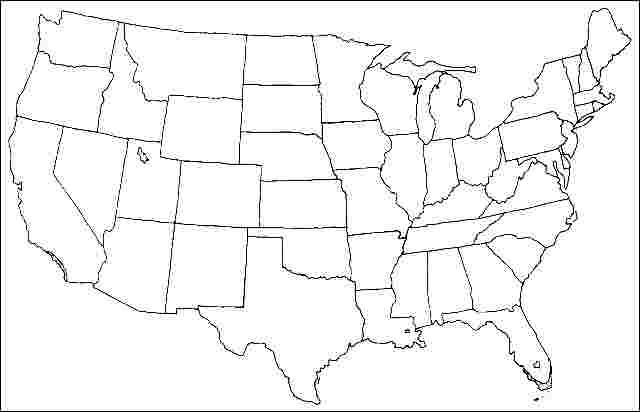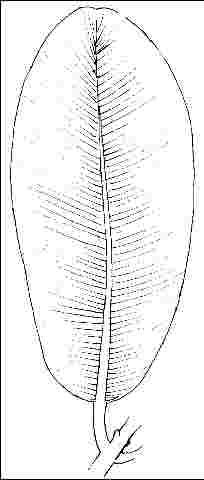Introduction
This upright, pyramidal, densely foliated evergreen tree can reach 60 feet in height in the forest with a 30- to 40-foot spread, but is generally much smaller because it grows slowly. This is an asset in tropical landscapes, where many other plants grow so fast. Greenish, showy, .75-inch, very fragrant flowers are produced on eight-inch racemes in the summer. The round, yellow, 1.5-inch-wide fruit contains a single seed with a nutlike kernel that may be poisonous. The seven-inch-long, glossy, dark green, stiff, leathery leaves have numerous, distinct parallel veins at right angles to the midrib. The trunk has light grey, shallowly ridged bark, and the wood is valued for boat building and cabinet work.

Credit: Ed Gilman
General Information
Scientific name: Calophyllum inophyllum
Pronunciation: kal-oh-FILL-um EYE-no-fill-um
Common name(s): Beauty Leaf
Family: Clusiaceae
USDA hardiness zones: 10B through 11 (Fig. 2)
Origin: not native to North America
Invasive potential: has been evaluated using the UF/IFAS Assessment of the Status of Non-Native Plants in Florida's Natural Areas (Fox et al. 2005). This species is not documented in any undisturbed natural areas in Florida. Thus, it is not considered a problem species and may be used in Florida.
Uses: sidewalk cutout (tree pit); reclamation; specimen; street without sidewalk; deck or patio; screen; shade; hedge; espalier; parking lot island 100–200 sq. ft.; parking lot island > 200 sq. ft.; tree lawn 4–6 feet wide; tree lawn > 6 ft. wide; urban tolerant; highway median; container or planter
Availability: not native to North America

Description
Height: 35 to 50 feet
Spread: 30 to 50 feet
Crown uniformity: irregular
Crown shape: pyramidal, round
Crown density: dense
Growth rate: moderate
Texture: coarse
Foliage
Leaf arrangement: opposite/subopposite (Fig. 3)
Leaf type: simple
Leaf margin: entire
Leaf shape: oblong, elliptic (oval)
Leaf venation: pinnate
Leaf type and persistence: evergreen, broadleaf evergreen
Leaf blade length: 4 to 8 inches
Leaf color: green
Fall color: no color change
Fall characteristic: not showy

Flower
Flower color: white/cream/gray
Flower characteristics: showy
Fruit
Fruit shape: round
Fruit length: 1 to 3 inches
Fruit covering: dry or hard
Fruit color: green
Fruit characteristics: does not attract wildlife; showy; fruit/leaves a litter problem
Trunk and Branches
Trunk/bark/branches: branches droop; showy; typically one trunk; thorns
Pruning requirement: little required
Breakage: resistant
Current year twig color: green
Current year twig thickness: thick
Wood specific gravity: unknown
Culture
Light requirement: full sun, partial sun or partial shade
Soil tolerances: clay; sand; loam; alkaline; acidic; well-drained
Drought tolerance: high
Aerosol salt tolerance: high
Other
Roots: not a problem
Winter interest: no
Outstanding tree: yes
Ozone sensitivity: unknown
Verticillium wilt susceptibility: unknown
Pest resistance: free of serious pests and diseases
Use and Management
Beauty leaf makes a good specimen, street, parking lot, or shade tree and is both wind and salt tolerant, making it especially useful for coastal locations. It becomes twisted and contorted when exposed to constant wind, creating an interesting specimen. Beauty leaf is sometimes used as a tall hedge or windbreak around tennis courts and similar places. It could be used more often as an urban street tree. Remember that the golfball-sized fruit is poisonous and hard, and this could be undesirable in the landscape under some circumstances. The trunk grows to about two feet in diameter.
Beauty leaf thrives in full sun or partial shade on any well-drained soil. It is not tolerant of freezing temperatures.
Propagation is by seeds or cuttings.
Pests and Diseases
No pests or diseases are of major concern.
Literature Cited
University of Florida, Institute of Food and Agricultural Sciences. 2018. "Assessment of Non-native Plants in Florida's Natural Areas" (https://assessment.ifas.ufl.edu, 4/29/2019) Gainesville, FL, 32611-4000, USA.